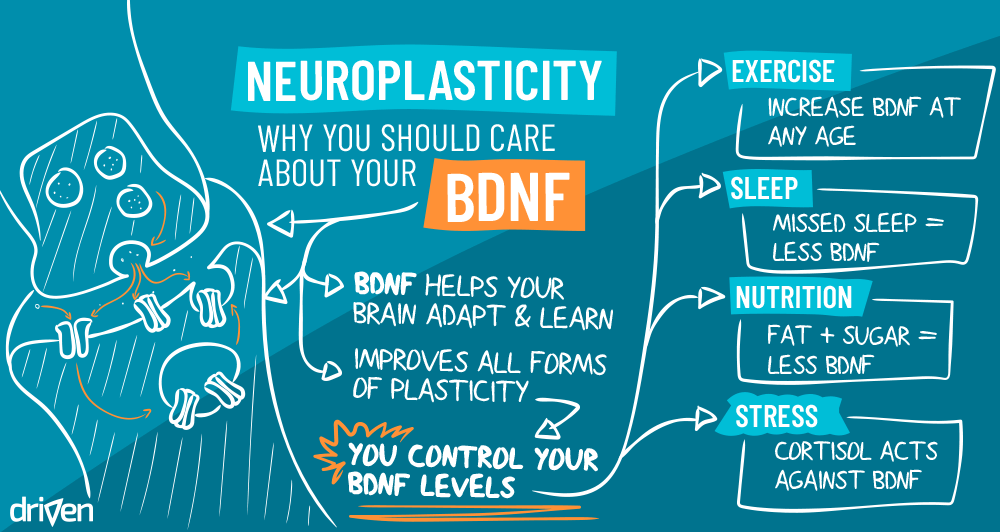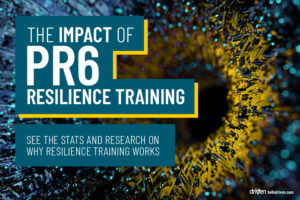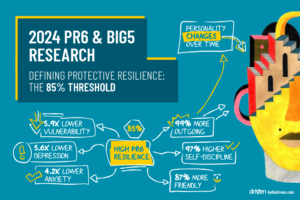Neuroplasticity: Why You Should Care About Your BDNF
Brain-derived neurotrophic factor, or BDNF for short, is a protein in the brain that is crucial for learning and adaptability. What’s curious about BDNF is how much direct control we have over its abundance. There are lifestyle factors that directly affect the amount of BDNF in your brain, and if you don’t take care of these, then they directly affect the ability of your brain to adapt.
Continuous learning and adaptation is not just about studying a new subject or learning a new skill, it is a fundamental requirement for the brain to keep up with your busy life. You may not always notice it, but things are constantly changing around you. As this happens, your brain is continuously trying to integrate information as the world changes, to help you make sense of it all. When this ability to continually adapt is compromised, it can result in frustration and other interruptive emotions.
So how does BDNF fit into the picture? Well, as you’ll see below, this little-known molecule has been hard at work in your brain for a long time, and plays some very important roles.
Increase your BDNF levels and build
resilience with the
Driven app. Download now.
BDNF Promotes Neuron Survival
A central function of BDNF is to help neurons and neural adaptation survive. This is especially seen in early development where BDNF is absolutely required for the prenatal brain to grow and mature. Later in life, BDNF continues to support learning by affecting the various forms of
neuroplasticity. These are:
- Neurogenesis – The creation of new neurons in the hippocampus, which is important for short-term memory formation.
- Dendritogenesis – Neurons can generate new dendrites, which are arms with synapses extending from the neuron, allowing new neural connections to form.
- Synaptogenesis – Gene transcription can result in new synapses being expressed, providing more sites to connect with other neurons.
- Synaptic strengthening – Finally, the actual strength of synaptic connections can be changed, allowing stronger connection between neurons, leading to long-term learning and adaptation.
BDNF upregulates all of these forms of plasticity when it is present, speeding up the brain’s ability to make new connections and learn.
BDNF Increases Learning
Previously we spoke about plasticity and how NDMA activation leads to the exposure of AMPA receptors at the postsynaptic terminal. In short, this shows us how the brain strengthens synaptic connections. However, BDNF has a role in mediating the effectiveness of this process.
Sufficient depolarisation of NDMA allows for calcium ions to flow into the cell and trigger systems to expose more AMPA receptors. The presence of BDNF increases the amount of NDMA activation, leading to more calcium influx and therefore increasing structural changes within the neuron.
What’s more, the presence of BDNF further increases the exposure and functioning of AMPA receptors. More AMPA receptors and more activity within these receptors means it is easier to activate these pathways than before. This is the mechanistic formation of new memories and new thought patterns.
The result is that when BDNF is present, we are better able to learn, we can learn faster, and therefore stay on top of our game as the world changes around us.
Cortisol Reduces BDNF
For all the benefits of BDNF, there are other factors that work against it. The stress hormone cortisol acts in opposition to BDNF, reducing BDNF levels as it increases. This means that when you are under stress, you are less able to learn and adapt your thinking. In particular, you are less likely to form constructive memories while under stress. While this may be ok from time to time, ongoing stress affects the health of your brain through chronic elevated cortisol and suppressed BDNF.
It is important to understand that the effect of cortisol reducing plasticity is a slow-creeping affliction of the brain. You won’t suddenly notice that your brain plasticity is struggling after years of chronic stress. Instead, over time, your thinking will become more rigid and you will become more set in your ways. As side effect, you’ll notice increased irritation with the world around you as things keep changing but your brain doesn’t keep up.
Fortunately, there are specific actions you can take to boost the BDNF in your brain.
You Control Your BDNF Levels
Through specific lifestyle factors you have the ability to directly control your BDNF levels. Let’s explore:
- Exercise – Slotting in a workout 4 times a week has been shown time and again in research to increase BDNF levels in the brain. This provides a cumulative effect over time, helping not just physical fitness, but also mental fitness and memory as well.
- Quality sleep – Missing out on sleep reduces BDNF levels, especially since much of your BDNF comes from the hippocampus which is highly active when you get deep sleep.
- Healthy nutrition – Unfortunately, that super tasty combination of sugars and fats (such as chocolate, donuts, ice cream, cookies, etc.) has been shown to reduce BDNF levels. The key is to cut down on sugars as they also have many other nasty effects to our health.
- Environment – Your work and home environment can also affect BDNF levels. Studies show that being in an environment that you find stimulating and motivating helps to boost BDNF levels. This means that finding ways to reduce stress and see situations in a constructive mindset helps you make the most of the situation and grow along the way.
There’s an important lesson here – maintaining a healthy lifestyle is not about your physical appearance. Instead, it is about maintaining a healthy and adaptable brain that allows you to constantly advance and achieve your goals.
Another lesson is that this is a long-term affair. If you face chronic stress in your job, then two weeks of holiday a year is not going to kick your BDNF levels back to a healthy level. Instead, you need to find ways to manage your day-to-day stress levels, whether that’s through changing your job, building resilience, meditation, or through some other means.
Making a long-term commitment to look after your BDNF will boost your wellbeing and set you up to stay
mentally sharp for life.
All the best,
Jurie
Click to get notified of new publications



